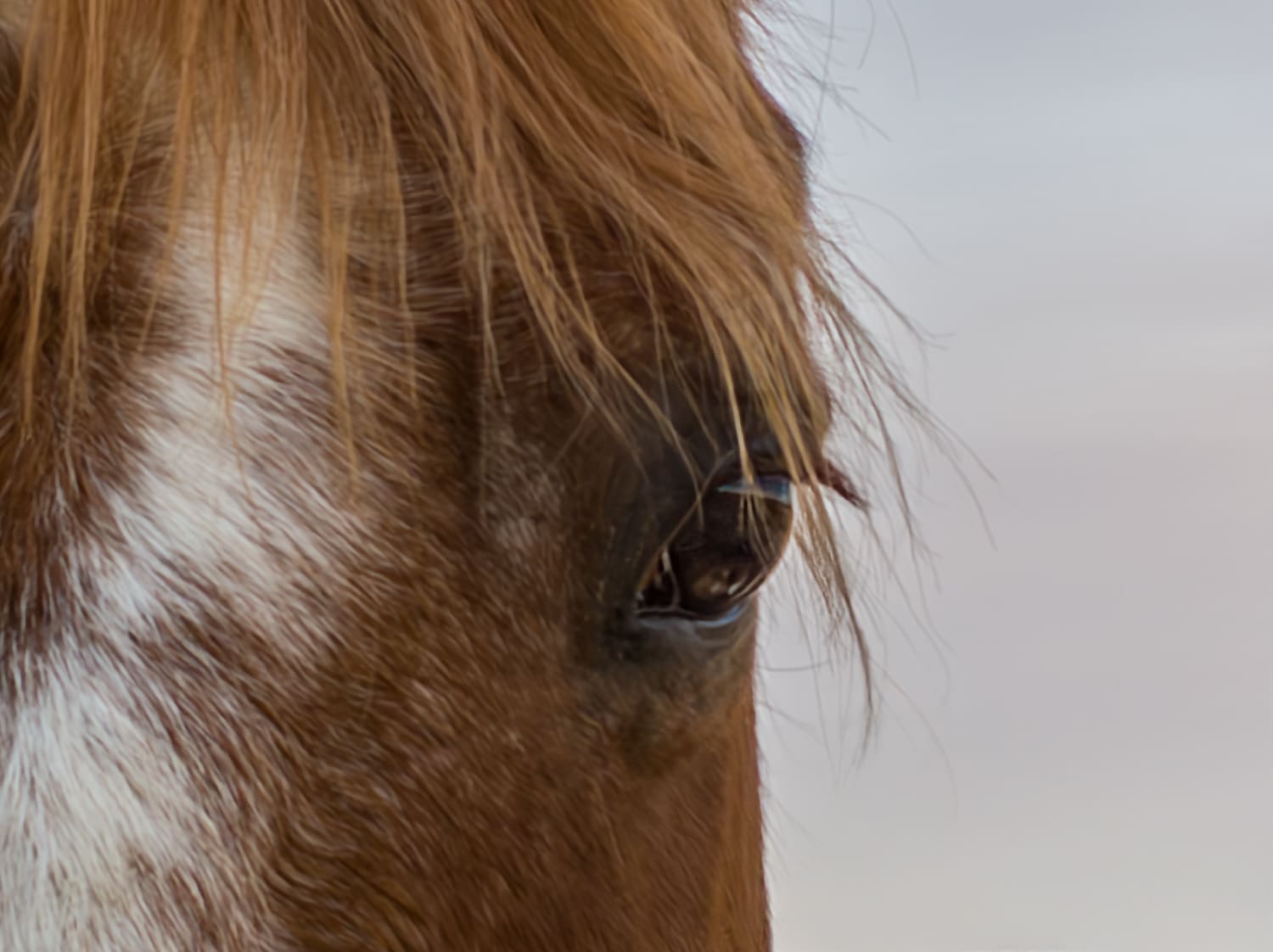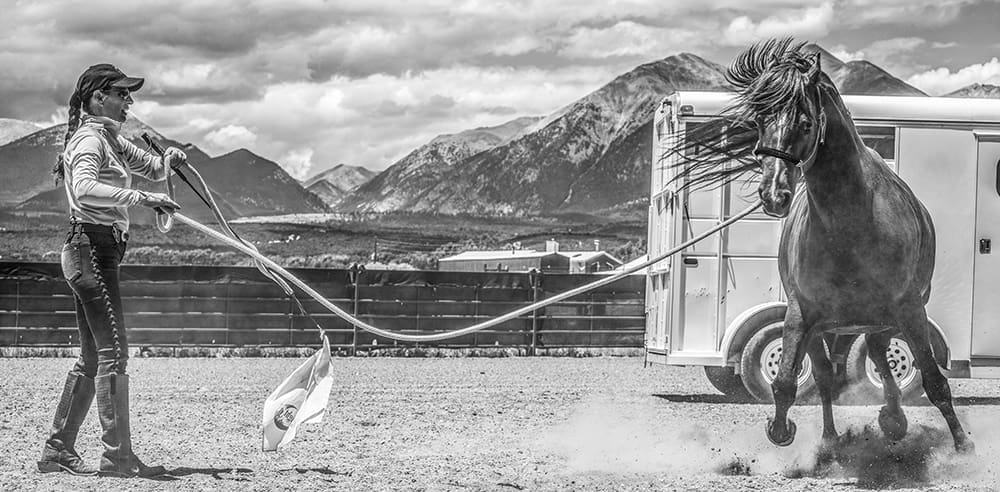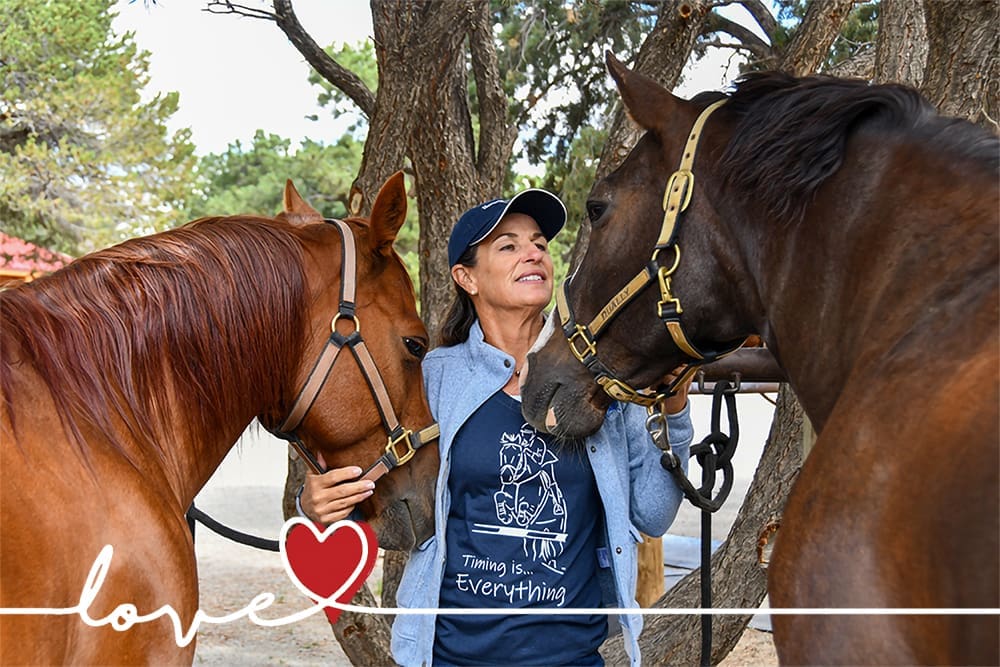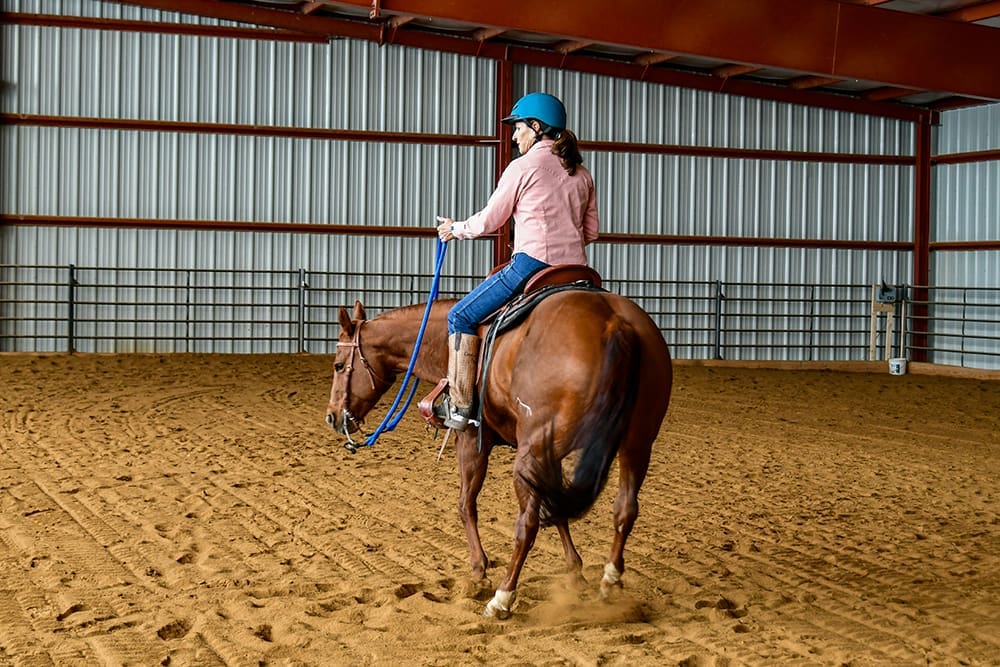
For many of us, the winter months are not conducive to riding, due to frozen ground, inclement weather and/or mud. And whether we like it or not, sometimes life gets in the way of our riding plans—your horse gets hurt or you have a personal situation that causes an extended layoff for your horse. One way or the other, your horse may go months with no riding at all. As a result, the horse may get little handling as well. This recipe—no riding and little handling—doesn’t always result in sweet rides in the spring or a delicious comeback to riding.
What we love most about horses is that they are not machines. They are thinking and feeling animals, capable of forming an athletic partnership and a bond with their human. But because they are not machines—and because our relationship with them matters—we can’t just ignore them for months and then expect them to step right back into their role as your perfect horse.
To make sure your spring “comeback” goes smoothly with your horse you need to plan ahead. Avoid the missteps that I hear about often when talking to horse owners at clinics and expos. Avoid making the mistakes that may leave a bitter taste in your mouth. Instead, try this recipe for a sweet summer of riding.
Take Time to Reconnect with Your Horse
If your horse has been turned out with a herd over the winter—or if he has had little interaction with people for a while—his herd instincts may be stronger. His focus may be on the herd—not on you—and he may fret when you take him away from his friends. This is perfectly normal, instinctive behavior for horses and it’s unrealistic to think otherwise. To have the kind of relationship with a horse where he is focused on you—and happy to leave the herd with you—requires work in the beginning of the relationship and steady maintenance thereafter.
Plan ahead as your riding season approaches and spend some time reconnecting with your horse. Groom him, do some ground work and take him on some walks away from his herd. Depending on how strong your relationship was last fall and how trained/experienced your horse is, plan on spending at least 3-6 days just getting reacquainted with your horse. I like doing lead line exercises to reconnect with my horse and remind him of his manners and my expectations of him (see my Lead Line Leadership video).
Check Your Tack and Saddle Fit
Don’t get carried away with riding until you have taken the time to inspect all your tack for needed repairs and maintenance, as well as checking the saddle fit on your horse. A horse’s body shape changes a lot every year. If you’ve ever had young horses you already know that. (As weanlings, if you watch them closely it seems like you can actually see them grow.) Think about the changes in the human body from birth to the end of life. A horse’s body goes through those same changes—only three-four times faster.
If he has not had much exercise over the winter, he may have gained weight and/or lost muscle toning, which can have a big effect on saddle fit. Take the time to analyze your saddle fit at least once a year and especially after your horse has had an extended time off. You may need different padding or adjustments. Last year, my horse Eddie (still filling out at the age of 7) outgrew his regular width tree and needed a new saddle. That’s not the answer I was hoping for when re-assessing his saddle fit, but I can’t bear the thought of working him in a saddle that causes discomfort.
Don’t forget to clean and condition your saddle and bridle, and check all the places where metal meets leather and all fasteners to make sure they are strong. Often the smaller parts of your tack—like latigos, leather ties, Chicago screws, and straps—need replacing or fixing. Make sure your bridle is clean and comfortable and the bit is the right size. Eddie also went from a 4 ¾ inch bit into a 5 inch (the standard size for a horse). But I would’ve changed his bit anyway since his training had advanced so much in the past few years that he was ready for a different bit. As horses progress in their training, they have different needs in bits too. You may find that the bit that worked well for your horse a couple years ago now makes him unhappy—he’s leaning, pulling, chomping, tossing his head, or running through the pressure. These are all signs that a bit change may be in order. Check out this “Bitting Assistant” from Toklat.
Avoid Doing Too Much, Too Soon
After a long, cold winter and too much time spent indoors, it’s easy to want to jump back into riding right where you left off in the fall. But the reality is, both you are and your horse need some time to get back into riding shape—and the older either you or your horse are, the more time you each may need. Both horses and humans get out of shape really fast when not getting exercise; and for both species, the activity of riding (or carrying a rider) uses special muscles. You both need time in the beginning—shorter rides with greater frequency—to build strength slowly.
Your horse also needs time to get used to his tack again—to get “hardened” to the cinch/girth, the saddle and the bit/bridle. If you had gone for months without wearing anything but slippers on your feet, you’d have to get used to wearing heavy boots again over subsequent days to avoid getting sore feet and blisters. Just as you would never want to hike all day in brand new hiking boots, your horse needs time to get re-accustomed to the feel of the saddle, the weight of the rider and the bridle on his face.
Finally, if you’re coming back to riding after a long layoff, think of reconditioning your horse’s training and mental focus as well. Don’t expect him to respond perfectly to cues he hasn’t thought about in a while. Don’t jump right in, asking your horse to perform the most difficult riding maneuvers right on the first try. Even if it seems like he’s just as responsive as the last time you rode him, asking for too much too soon could lead to problems. Start by doing easier stuff and focusing on fundamentals. Make sure you acknowledge and reward your horse when he tries—whether it was brilliant or not—so that you recondition his spirit and willingness as well.
By setting realistic expectations, planning ahead and building up slowly but methodically, your “comeback” will go smoothly and your horse will be happier. Remember, your horse needs the same time that you do to get in condition—both mentally and physically. Be fair to yourself and be fair to your horse. With quality ingredients and careful preparation, your riding season will be cake!



